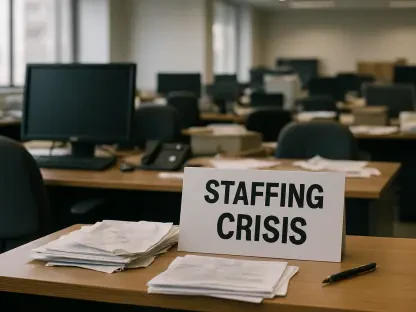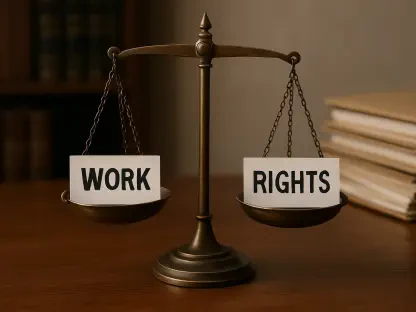Sofia Khaira, an authority on diversity, equity, and inclusion, is adept at guiding businesses through complex talent management challenges while fostering inclusive environments. Her expertise provides valuable insights into effectively addressing public scrutiny and ensuring equitable workplaces. Today, we delve into the strategies organizations can employ during such crises.
Can you describe the initial incident at Hawksmoor Steakhouse and what led to the public scrutiny?
The incident at Hawksmoor Steakhouse began when the restaurant asked a notable public figure, Tommy Robinson, to leave, citing discomfort among guests and staff. Despite the party leaving peacefully, the episode led to accusations of discriminatory behavior, sparking extensive public dialogue. The restaurant aimed to clarify that the decision wasn’t based on politics or personal beliefs, yet the perceived controversy attracted widespread attention.
How did Hawksmoor handle the situation with Tommy Robinson and ensure it was not about politics or belief?
Hawksmoor opted to issue a statement maintaining neutrality by focusing on their guests’ discomfort, rather than engaging in politicized debate. Their response emphasized the importance of guest and staff well-being, portraying the decision as one grounded in immediate situational needs, not political viewpoints. This method sought to de-escalate public polemics while affirming their commitment to a respectful atmosphere.
What are some key strategies organizations should adopt when faced with public backlash?
Organizations should prioritize transparent communication and involve their PR, comms, and legal teams directly with senior leadership and HR. Crafting thoughtful, consistent messaging both internally and externally can mitigate misunderstandings. Adopting a risk-based approach helps anticipate worst-case scenarios, enabling more measured responses rather than impulsive reactions.
Why is it important for staff to learn about incidents from their organization rather than the media?
When staff receives information straight from the organization, it prevents potential misinformation from external sources, reducing anxiety and confusion. Direct and honest internal communications build trust, ensuring employees feel informed and supported during challenging times. This approach fosters a unified response and mitigates speculation.
How can a PR and communications team effectively collaborate with senior leadership and HR during a crisis?
Effective collaboration requires seamless integration of expertise, where each team offers its unique perspectives to devise unified strategies. Regular meetings focused on aligning messaging, staying informed of developments, and sharing feedback ensure coherence and agility in response. This partnership helps maintain organizational harmony and crisis resilience.
What guidelines should be communicated to employees regarding media policies during such events?
Guiding employees on media policies involves setting clear protocols around sharing sensitive information and engaging in discussions about the incident. Restricting unofficial posts and comments is crucial to managing public narrative. Such guidelines bolster the organization’s stance and prevent misinterpretations while safeguarding reputation and operational focus.
What kind of support should HR leaders provide to employees who may be experiencing stress, anxiety, or trauma due to organizational scrutiny?
HR leaders should create safe spaces for employees to express concerns, ask questions, and discuss the issue openly. Providing access to external counseling services for both individuals and groups is vital for addressing emotional and psychological impacts. This supportive infrastructure helps maintain morale and employee well-being.
How can organizations ensure their leadership is supported through challenging times in the public eye?
Leadership support is multifaceted, involving emotional reassurance and strategic advice. Forming an incident response team comprising both internal and external advisors can offer fresh perspectives, helping leaders evaluate the situation effectively. Continuous mentorship and guidance reinforce resilience and focus amid scrutiny.
Can you elaborate on the concept of a risk-based approach in handling public scrutiny and its benefits for decision-makers?
A risk-based approach involves anticipating potential scenarios and establishing contingency plans that align with organizational values. This proactive stance enables decision-makers to navigate challenges without sacrificing integrity or long-term goals. Balancing short-term outcomes with the greater organizational message enhances consistency and credibility.
How can organizations use their values and behaviors to guide their actions during a crisis?
In times of crisis, acting consistently on established values ensures decisions align with core principles, safeguarding reputation. When organizations prioritize ethics over immediate profits, they uphold their commitment to stakeholders, fostering trust and reinforcing brand integrity. Celebrating these values publicly can unify teams and reassure customers.
In what ways can external counseling be beneficial to employees during times of intense scrutiny?
External counseling provides specialized support, offering a safe environment for employees to discuss fears and anxiety privately. Professional counselors bring impartiality, helping individuals process their responses and cope more effectively. Such resources are vital for maintaining mental health and reducing stress-related impacts.
What are some protective steps organizations can take when faced with threats, intimidation, or reputational harm?
Organizations should promptly document any threats and involve appropriate authorities like law enforcement to ensure safety. Engaging online platforms to manage digital exposure, monitoring conversations, and acting swiftly to retract harmful content can mitigate risks. These steps prevent escalation and protect both individual and corporate reputations.
How does involving law enforcement or online platforms play into safeguarding an organization’s reputation?
Engaging law enforcement provides legitimacy and support for handling serious threats, ensuring all measures are officially documented. Online platforms aid in controlling narrative direction, enabling organizations to address potential misinformation swiftly. This dual strategy reinforces security and systematic response to reputational challenges.
What measures did Tripadvisor implement in response to the Hawksmoor incident, and why were these actions deemed necessary?
Tripadvisor added a notice suspending new reviews on Hawksmoor’s page to prevent unwarranted backlash. This intervention reflected proactive measures to safeguard staff reputation and mitigate online hostility. Such actions validated organizational procedures in preserving integrity and mitigating further controversy.
How can organizations balance staff welfare with their public-facing service ethos during a PR crisis?
Maintaining a balance involves strategic planning to uphold service values while prioritizing staff well-being. Transparent communications about decisions ensure alignment and understanding among stakeholders. Implementing plans that offer reassurance, like covering costs or avoiding confrontation, can exemplify thoughtfulness, bypassing conflict.
In your view, was Hawksmoor’s offer to cover drinks and avoid confrontation an effective strategy? Why or why not?
The decision was pragmatic, minimizing immediate conflict while demonstrating respect for differing perspectives. By providing complimentary drinks, Hawksmoor affirmed its commitment to hospitality without engaging further dispute. This approach ensured a peaceful resolution, highlighting the restaurant’s priority for staff and guest welfare over public contention.
Do you have any advice for our readers?
In these complex times, organizations should embrace transparency, fostering unity through honest dialogues, while staying true to values. Being prepared, proactive, and responsive to both internal and external cues ensures resilience and authenticity amidst scrutiny.









